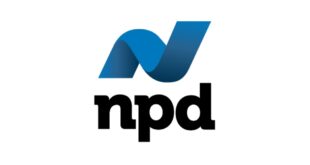The American games market is on the rise, with consumer spending increasing by $200m in 2016. That’s according to a report from US games trade body the ESA and market tracker NPD, which says the nation’s games industry generated $30.4bn in 2016. 2015’s figure was $30.2bn. That includes revenue from hardware, software, accessories and in-games purchases.
Software revenue rose six per cent year-on-year, with $24.5bn generated by sales of boxed and digital games, mobile titles as well as DLC, subscriptions and ‘other revenue streams’. By comparison, $23.2bn was made in 2015.
“2016 was another enormous year for the interactive entertainment industry,” said ESA president and CEO Michael D. Gallagher, president and CEO.
“The industry’s innovative genius and ability to engage and delight billions of gamers worldwide delivered another record performance. Congratulations to the developers, storytellers, creators, and investors who defined the leaderboard for entertainment.”
Meanwhile, NPD’s report for the console and PC market in 2016 paints a slightly bleaker picture.
The market tracker reports that $12.16bn as made from hardware, console and PC software and accessories – a 12 per cent dip.
NPD says that hardware revenue dropped 24 per cent to $3.68bn. Console software revenue – from both physical and digital releases – saw a six per cent dip to $5.79bn, while PC game revenue rose five per cent. Accessories and peripherals revenue – which includes subscription and full game download cards – fell six per cent to $2.35bn.
“2016 was a tough year for hardware spending,” NPD video games industry analyst Sam Naji said.
“The category was down 24 per cent as unit sales and the average retail price for consoles declined compared to 2015. On a positive note, Nintendo did shift an additional four per cent of 3DS systems thanks in large part to the heightened demand for Pokemon.”
He continued: “Total hardware spending for 2016 reached $3.7bn, a decline of 24 per cent versus 2015. Unfortunately the release of the Xbox One S and the PlayStation 4 Pro did not generate dollar spending growth. Although the combined ARP for the Xbox One and PlayStation 4 systems decreased by 15 per cent, consumers bought seven per cent fewer units.”
Below is 2016’s software Top Ten:
1. Call of Duty: Infinite Warfare, Activision
2. Battlefield 1, EA
3. The Division, Ubisoft
4. NBA 2K17, 2K Games
5. Madden NFL 17, EA
6. Grand Theft Auto V, Rockstar
7. Overwatch, Blizzard
8. Call of Duty: Black Ops III, Activision
9. FIFA 17, EA
10. Final Fantasy XV, Square Enix

 MCV/DEVELOP News, events, research and jobs from the games industry
MCV/DEVELOP News, events, research and jobs from the games industry

